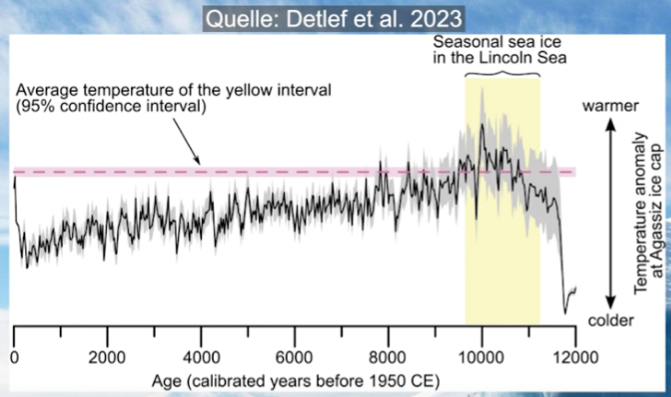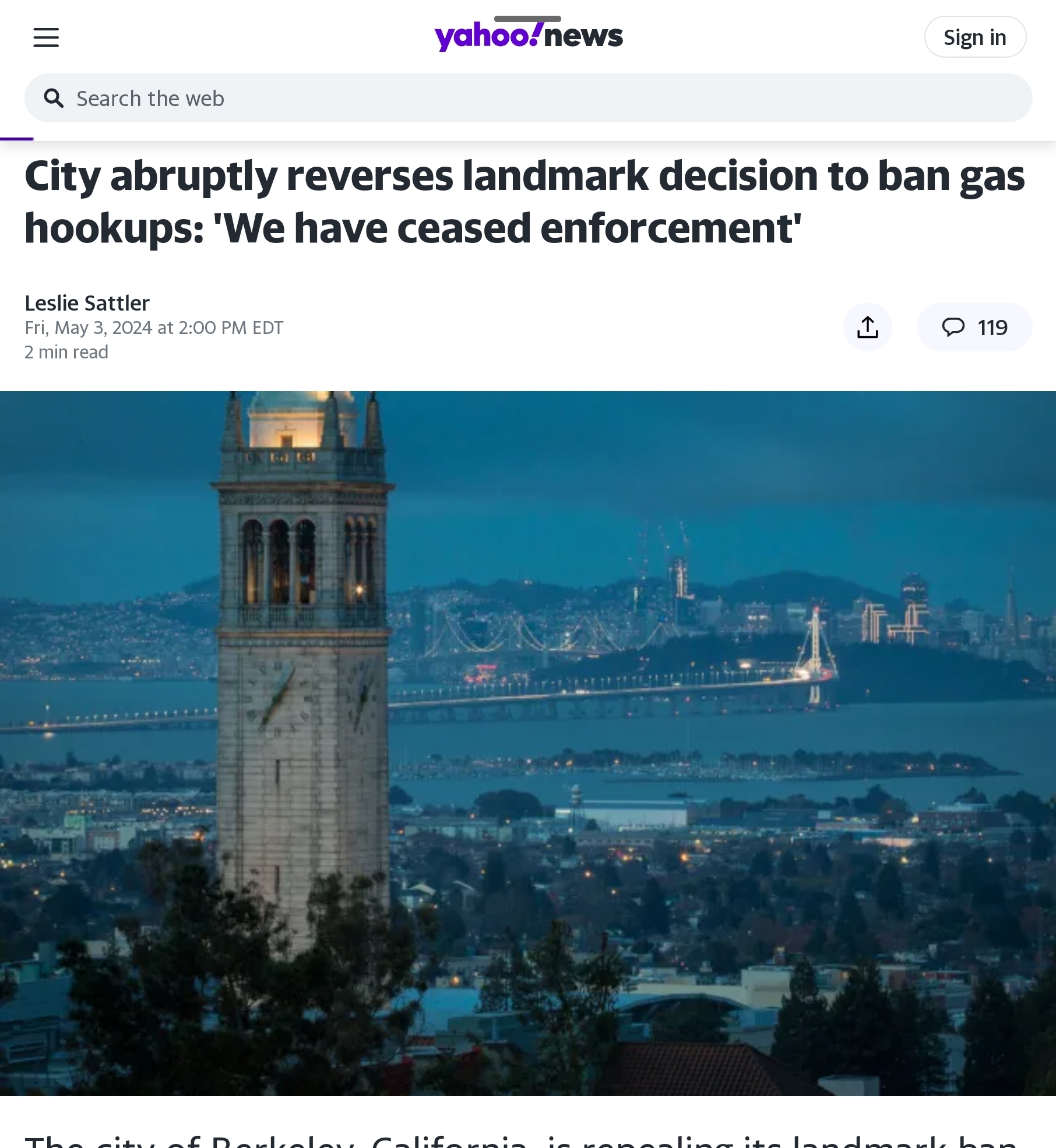https://robertbryce.substack.com/p/california-screamin?publication_id=630873&isFreemail=true
By Robert Bryce
California’s headlong rush to renewables has resulted in soaring electricity prices –- up nearly 15% last year alone — but the state’s CO2 emissions aren’t falling.

Last week, the Bay Area Air Quality Management District approved new regulations that will ban the use of residential and commercial natural gas-fired water heaters and furnaces in 2027. The regulation, which only applies to new appliances, prohibits residents in the Bay Area from buying or installing gas water heaters starting in 2027. The prohibition on residential furnaces starts in 2029 and the ban on commercial water heaters begins in 2031.
In a March 15 press release, Philip Fine, the executive officer of the agency said the new “groundbreaking regulation will phase out the most polluting appliances in homes and businesses to protect Bay Area residents from the harmful air pollution they cause.” He also said the ban was justified because those appliances “significantly impact our air quality, resulting in dozens of early deaths and a wide range of health impacts, particularly in communities of color.”
The move is the latest example of how California policymakers are adopting a phalanx of regulations that are forcing residents to use electricity instead of natural gas. According to the Sierra Club, which has been leading the effort to ban the direct use of natural gas, 74 California communities have passed forced electrification measures since 2019. And these regulations are being approved at the same time electricity costs in the state are soaring. Two weeks before the BAAQMD passed its ban on natural gas appliances, the Energy Information Administration released data showing that California’s residential electricity prices jumped by 14.7% in 2022.
That’s only the latest increase. Since 2008, when Governor Arnold Schwarzenegger signed an executive order requiring the state’s utilities to obtain a third of the electricity they sell from renewables by 2020, all-sector electricity prices in California have soared by 80%. California residents are now paying the highest electricity prices in the U.S. outside of Hawaii. But here’s the really sobering part: Despite these soaring costs, the state’s headlong rush for renewables has not resulted in a big drop in the state’s electric sector missions. More on that in a moment.

Before going further, it’s important to understand why these soaring energy costs matter. California has the highest poverty rate in America. Indeed, the state’s poverty situation is nothing short of shocking. A 2021 report by the Public Policy Institute of California found that “More than a third of Californians are living in or near poverty. Nearly one in six (16.4 percent) Californians were not in poverty but lived fairly close to the poverty line … All told, more than a third (34.0 percent) of state residents were poor or near-poor in 2019.”
Los Angeles, the state’s biggest city, and a magnet for generations of immigrants, has one of the highest poverty rates among America’s biggest cities. California also has the largest Latino population in America. About 15 million Latinos live in the Golden State and they account for about 40 percent of its population. But the PPIC report also found that more than Latinos account for nearly 52 percent “of poor Californians but only 39.7 percent of the state population.”
Rising electricity prices are not a big deal for wealthy Californians who live near the coast and don’t use much air conditioning or heating. They can easily absorb those higher costs. But for low-income Californians, particularly ones living far from the coast and need lots of air conditioning in the summer and electric heat in the winter, it’s an entirely different story. But higher electricity prices are only one aspect of California’s regressive energy policies. Expensive motor fuel also exacts a higher toll on the poor than on the wealthy. Last summer, motorists in the state began paying an additional 3-cent-per-gallon tax on gasoline, a move that made California’s motor fuel even more expensive. Today, according to AAA, motorists in the state are paying an average of $4.83 per gallon for gasoline, which is roughly 40% more than motorists in the rest of the U.S

California’s surging electricity costs have coincided with increasing renewable energy mandates and the closure of the San Onofre Nuclear Generating Station in 2012. In 2015, Governor Jerry Brown signed a law that boosted the mandate to 50% by 2030. In 2018, California lawmakers imposed yet another mandate that requires the state’s electric utilities to procure at least 60% of their electricity from renewables by 2030 and 100 percent “zero-carbon” electricity by 2045. In 2022, Gov. Gavin Newsom signed into law a measure that “creates clean electricity targets of 90% by 2035” and reaffirmed the state’s target of 100% “clean electricity” by 2045.
Since 2008, when Schwarzenegger mandated renewables in the electric sector, California’s residential electricity prices have increased more than three times faster than those in the rest of the country. As can be seen in the graphic below, residential electricity prices in the state jumped by 12.4 cents per kilowatt-hour while prices in the rest of the country increased by less than four cents per kilowatt-hour.

Those prices will continue soaring. Last year, the California Public Utilities Commission unanimously approved a scheme that aims to add more than 25 gigawatts of renewables and 15 gigawatts of batteries to the state’s electric grid by 2032 at an estimated cost of $49.3 billion. In addition, the California Independent System Operator released a draft plan to upgrade the state’s transmission grid at a cost of some $30.5 billion. The combined cost of those two schemes is about $80 billion. Dividing that sum among 39 million residents works out to about $2,050 for every Californian.
But the final price will undoubtedly be far more than $80 billion. Big public works projects routinely exceed initial estimates; California’s beleaguered high-speed rail project was expected to cost $33 billion when it was approved by voters back in 2008. The latest cost estimate: a mind-boggling $128 billion. The California High Speed Rail Authority said the cost increases are due to “inflation/escalation, enhanced scope definition and greater contingency for risk.”

…
Last September, while signing into law a slew of climate-related bills, Gov. Newsom declared that the state was taking the “most aggressive action on climate our nation has ever seen…That’s climate action done the California Way -– and we’re not only doubling down, we’re just getting started.”
In other words, last year’s 15% increase in electricity prices was just an amuse-bouche. More big rate hikes are on the way.
The punchline here is obvious: California provides a stark warning to the rest of the United States about how NOT to manage an electric grid. Aggressive renewable energy mandates may be politically popular, but they come with exorbitant price tags that punish the poor and provide negligible (if any) cuts in CO2 emissions.




